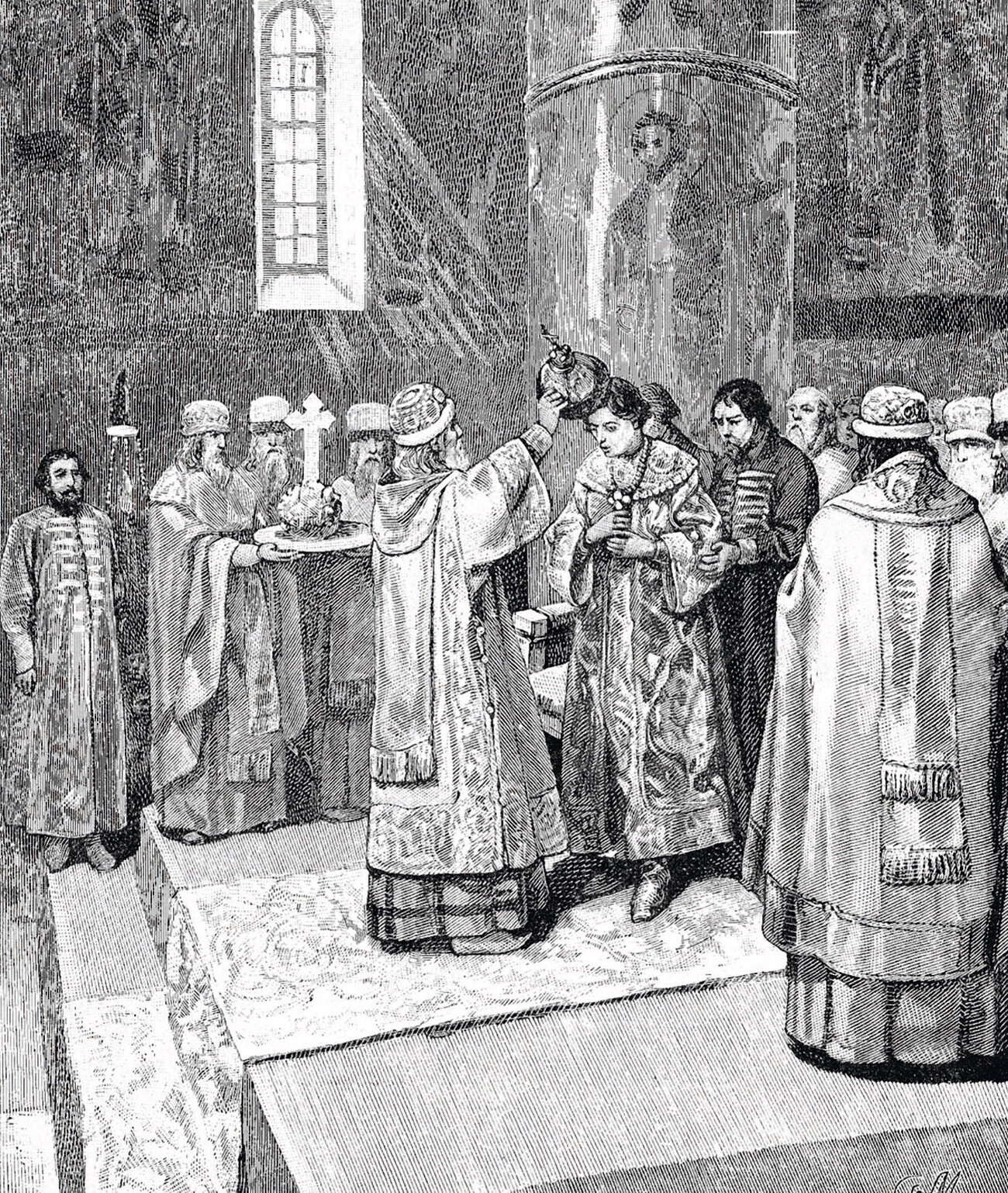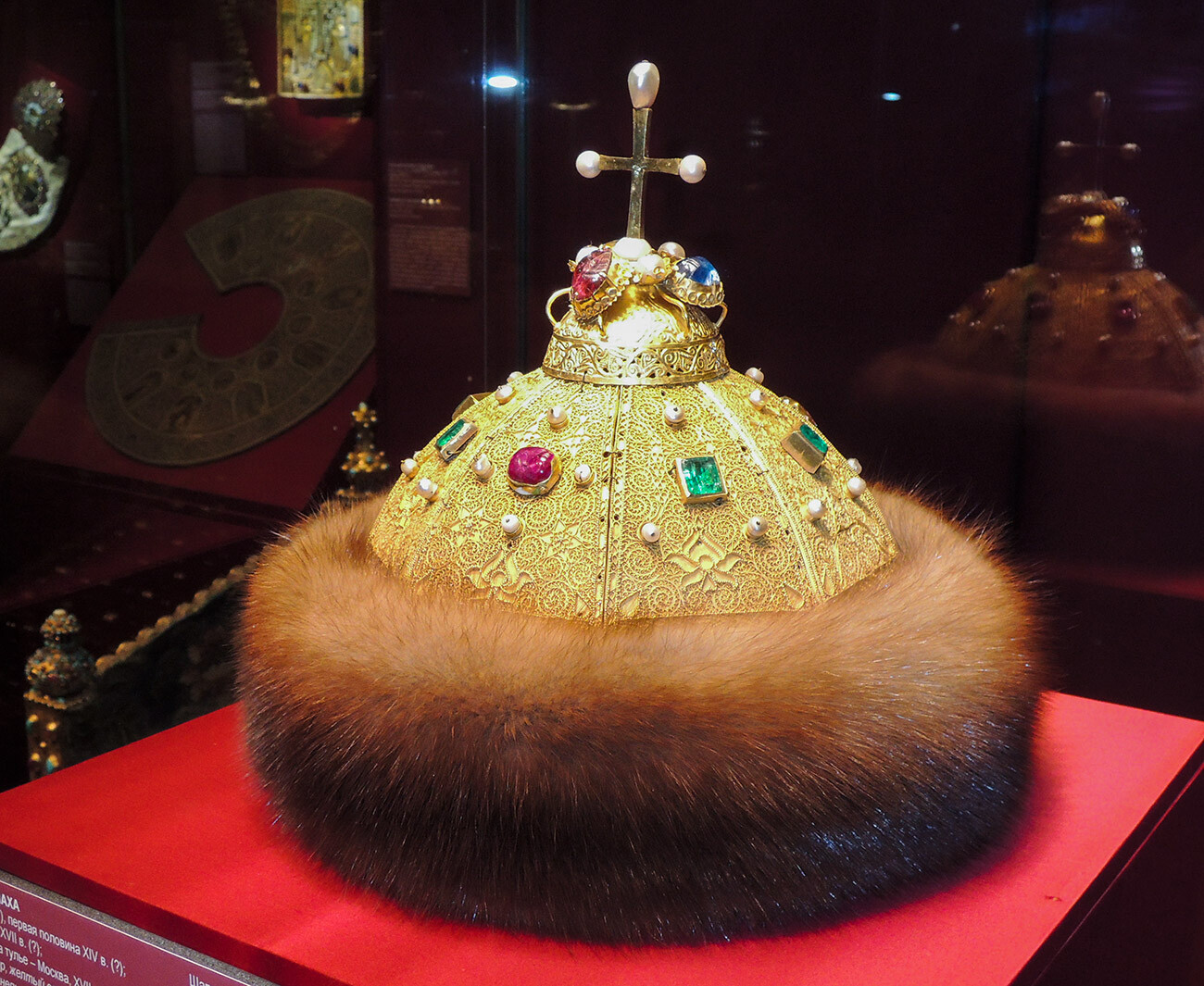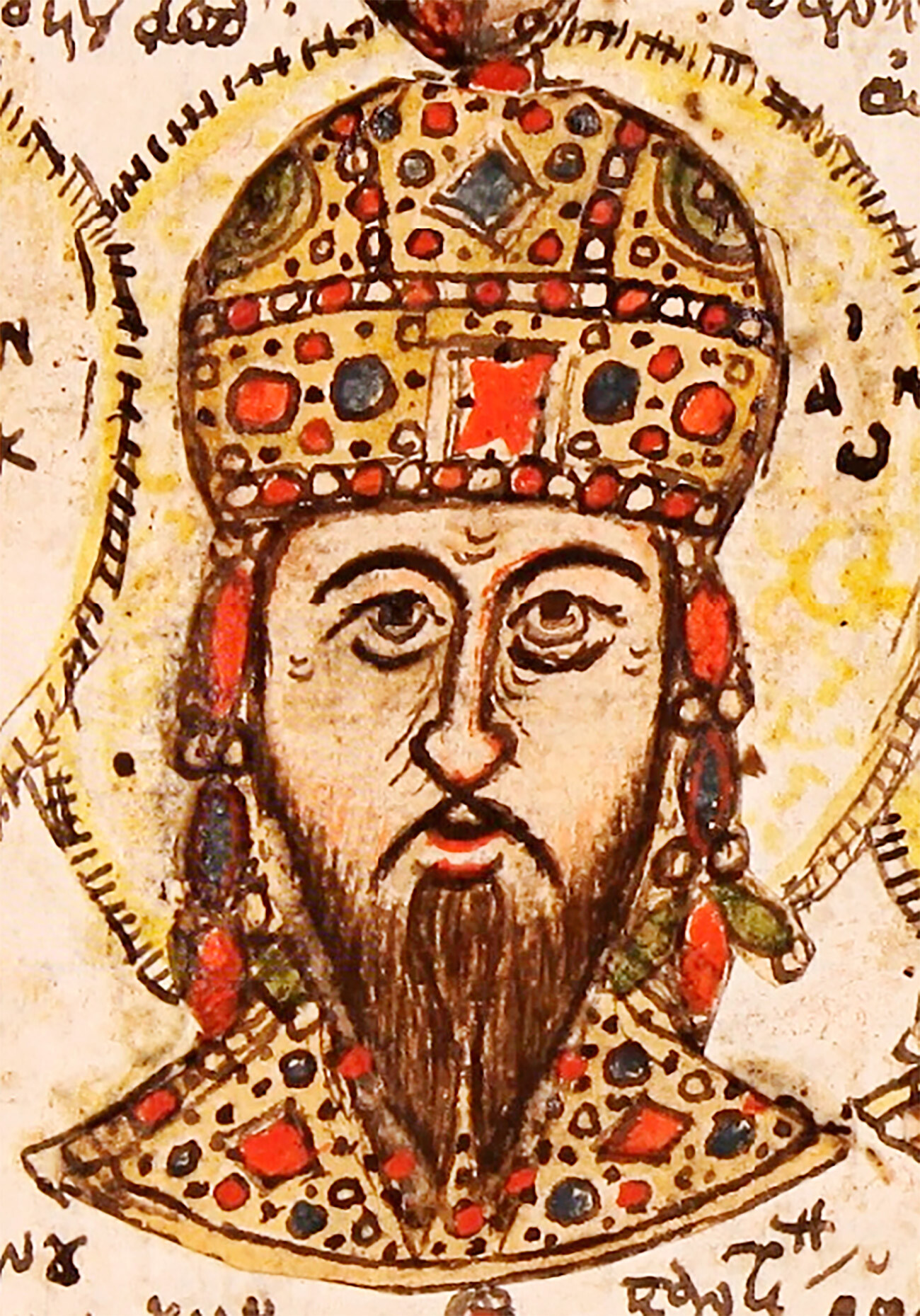
All Russian emperors were formally and actually tsars. The first Russian emperor, Peter the Great, was crowned in 1682 as ‘By the grace of God, the Most Serene and Sovereign Grand Autocrat and Grand Prince Peter Alexeevich of all the Great and Small and White Russias: the Ruler of Moscow, Kiev, Vladimir, Novgorod, Tsar of Kazan, Tsar of Astrakhan and Tsar of Siberia’ (italics - RB). This is a quote from the official title of Peter Alexeyevich.

Peter I the Great in Russian costume (engraving)
Public domainIn 1721, Peter was not crowned Emperor of All the Russias, but only “accepted” this title from the Governing Senate and the Holy Synod, along with the titles of ‘Great’ and ‘Father of the Fatherland’. Ironically, Peter didn’t initially own his own imperial crown – he ordered one only in 1724 for the coronation of his wife Catherine I.

The coronation of Ivan the Terrible in 1547, by Klavdiy Lebedev
Klavdiy LebedevSince Peter became the emperor, the official title of Russian rulers changed. The title phrase: “Great Sovereign, all the Great and Small and White Russia autocrat” was changed to “Emperor and Autocrat of All Russia”, the title ‘Sovereign Tsarina and Grand Duchess’ – to ‘Her Majesty the Empress’. However, the combinations ‘Tsar of Kazan, Tsar of Astrakhan and Tsar of Siberia’ continued to be present in the official title of emperors.

The Monomakh's Cap, the oldest crown of the Russian tsars, in the Kremlin Armory
Shakko (CC BY-SA 4.0)There were also isolated cases: in 1784, Catherine II adopted the title ‘Tsarina of Chersonesos Taurica’. In 1815, Alexander I took the title of ‘Tsar of Poland’, in 1882, Alexander III took the title of ‘Tsar of Georgia’. The official title of Emperor Nicholas II included all of them – ‘Tsar of Kazan, Tsar of Astrakhan, Tsar of Poland, Tsar of Siberia, Tsar of Chersonesos Taurica and Tsar of Georgia’.

John VII Palaiologos (1370 – 1408), one of the Byzantine emperors
Public domainThe word ‘tsar’ in Russian comes from ‘caesar’, the Latin word for all Byzantine emperors.
‘Tsars’ in Russia after the Byzantine emperor were the Tatar khans of the Golden Horde and its breakaway khanates, such as Astrakhan, Kazan and others. When, in 1547, Ivan the Terrible took the title of tsar, he primarily emphasized the independence of Russia and his autonomy – he was now the tsar, because the Horde’s political dominion ended in 1480, under Grand Prince Ivan III. Incidentally, it was the latter who began to be called ‘Caesar’ and ‘Emperor’ in Europe for the first time among the Russian rulers – long before they adopted the title of ‘Tsar’.
READ MORE: Why Russians called their monarch 'tsar'
Therefore, for a Russian person before the revolution, ‘emperor’ and ‘tsar’ were deemed to be identical. And, first and foremost, because each of the emperors was crowned according to the old tradition, in the Assumption Cathedral of the Moscow Kremlin. Read more about it here.
Dear readers,
Our website and social media accounts are under threat of being restricted or banned, due to the current circumstances. So, to keep up with our latest content, simply do the following:
If using any of Russia Beyond's content, partly or in full, always provide an active hyperlink to the original material.
Subscribe
to our newsletter!
Get the week's best stories straight to your inbox